Group Leader Profiles
| Research | ||
|---|---|---|
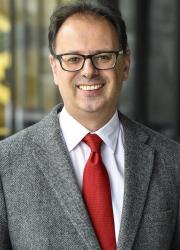 |
Prof. Dr. Ali AlaviDirector at the Max Planck Institute for Solid State Research (MPI-FKF)homepage |
Electronic Structure Theory The research in the Electronic Structure Theory department is largely concerned with the development of accurate methods to solve many-electron Schrodinger and more generally many-body type eigenvalue problems, which can handle electron correlation and spin-related phenomena, as well as ameliorating basis set errors which rise from slow-basis set convergence which appears in ab initio descriptions. These are problems for which exact solutions generally require exponentially large amounts of computer resources. Progress in such problems usually requires approximate techniques, such as stochastic diagonalisation and related active-space methods, coupled-cluster theory, as well as explicitly correlated methods such as "transcorrelation". We welcome enquiries from qualified individuals (with a Masters in a relevant field of theoretical chemistry or physics). Dr. Giovanni Li Manni, group leader at the Electronic Structure Theory Department offers a PhD position in the Field of Theoretical and Computational Chemistry for Enlightening open-shell 3d Metal Complexes through Compressed Ligand Fields. More info can be found here Research Method and Area: Theoretical and Experimental Chemistry |
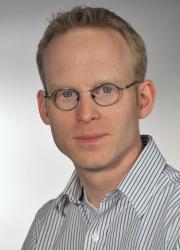 |
PD Dr. Christian AstGroup Leader at the Max Planck Institute for Solid State Research (MPI-FKF)homepage |
Quantum Materials and Nanoelectronics - Atomic Scale Spectroscopy The research in our group is focused on the electronic and magnetic properties of few level systems looking for new quantum limits at the atomic scale. We are exploiting the interplay of magnetism, superconductivity, and correlation effects to isolate few level systems and understand their dynamics. Using scanning tunneling microscopy at lowest temperatures (between 10mK and 500mK), we study individual magnetic impurities coupled to superconducting substrates. We are interested in the resulting phenomena, such as Yu-Shiba-Rusinov states, and their suitability for quantum sensing or information processing. In addition, we combine electron spin resonance spectroscopy with scanning tunneling microscopy to understand and manipulate single spin systems isolated from their enviornment. Research Method and Area: Experimental Physics |
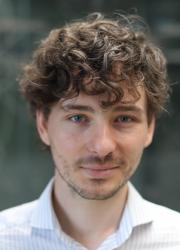 |
Dr. Julien BarrierGroup Leader at the Max Planck Institute for Solid State Research (MPI-FKF)homepage |
Low-dimensional quantum electronics The emergence of strongly correlated electronic phases remains one of the unsolved puzzles of modern condensed matter physics. In low dimensions, the strength of interactions between electrons is enhanced, which make these systems prime candidate to understand the origin of emerging electronic phases, with the added benefit of metrology and quantum computing applications. Our research group combines nanofabrication of graphene structures, local probes and quantum transport at ultra-low temperatures to induce, control and explore strong electron interactions in one- and two-dimensional systems. We experimentally control the magnitude of electron-electron interactions in quantum materials to understand the interplay between quantum confinement, non-trivial topology and interaction strength. Research Method and Area: Experimental Physics |
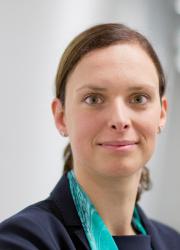 |
Prof. Dr. Stefanie BarzInstitute for Functional Matter an Quantum Technologies, University of Stuttgarthomepage |
Integrated Quantum Optics and Quantum Information The research of our group is concerned with quantum technologies and quantum optics. One particular research focus is quantum networks: we implement quantum protocols, build distributed quantum networks and perform secure quantum computations in them. Furthermore, we work on demonstrating quantum effects in systems with few particles and how to exploit those for applications. Our research is experimental and focuses on photonic quantum systems, meaning we generate, manipulate, and detect single photons. Furthermore, our research is interdisciplinary and involves aspects from physics, engineering, and computer science. Research Method and Area: Experimental Physics |
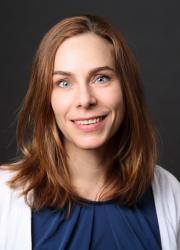 |
Dr. Eva BenckiserGroup Leader at the Max Planck Institute for Solid State Researchhomepage |
X-ray Spectroscopy of Oxide Heterostructures The research in our group focuses on the study of transition-metal oxide thin films and multilayers using resonant x-ray spectroscopy. Our goal is to combine different quantum materials in a heterostructure to stabilize new phases with functional properties that can be used, for example, in sensor, memory or logic applications. Research Method and Area: Experimental Physics |
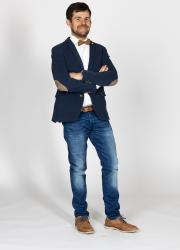 |
Prof. Dr. Oliver ClemensProfessor for Materials Chemistry at University of Stuttgarthomepage |
New Materials for Energy Applications The group works on the development of novel battery systems, among them fluoride ion batteries and solid state batteries. For the former, the intercalation and deintercalation of fluoride ions leads to a change of electronic properties, and can induce novel magnetic phenomena or superconductivity. The development of catalysts for the oxygen reduction reaction is further connected to the chemistry of oxyfluoride compounds. In addition, we target the development of materials for solid state batteries, considering their sustainability and suitability for circular economy. Methods used in the group comprise solid state and wet-chemical synthesis routes, thin film deposition as well as topochemical low-temperature routes, combined with structural, electrochemical and magnetic characterization and compositional analysis. Research Method and Area: Experimental Chemistry, Material Science |
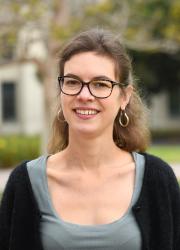 |
Prof. Raphaele ClementDirector of the Max Planck Institute for Solid State Researchhomepage |
Department of Electrochemical Materials Our research seeks to elucidate the links between the structure and properties of technologically-relevant materials. The primary goal of our work is to advance electrochemical energy storage through the design and control of the atomic and electronic structure, and microstructure of materials, including the discovery of novel compounds, and through the optimization of interfaces and composite structures in devices. Our approach encompasses innovative synthesis approaches, electrochemical testing, as well as the in-depth investigation of structural and electronic phenomena taking place in the electrodes, in the electrolyte, and at their interfaces during battery function. For this, we use complementary diagnostic tools, from state-of-the-art spectroscopy, to diffraction/scattering, to electron microscopy. In particular, we develop high resolution solid-state nuclear magnetic resonance (NMR) spectroscopy, operando and in situ NMR and electron paramagnetic resonance (EPR) spectroscopy, magnetometry, and magnetic resonance imaging (MRI). Another pillar of our work is the development of first principles and statistical mechanics computations to facilitate the interpretation of our experimental results. Research Method and Area: Theoretical and Experimental Chemistry, Material Science |
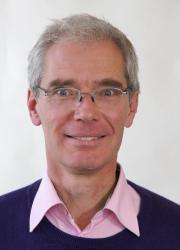 |
Prof. Dr. Martin DresselDirector of the 1st Physics Institute, University of Stuttgarthomepage |
Optical, Electronic, and Magnetic Properties of Quantum Materials, Topological Material, Superconducting Electronics, and Advanced Materials, Biomaterials Solid state physics, correlated electron systems, molecular quantum materials, magnetically frustrated systems, quantum spin liquids, topological materials, Dirac and Weyl electrons, physics of low-dimensional solids, superconductivity, materials for quantum computers, superconducting electronics, electrodynamics of solids, infrared and THz optical measurements of solids, microwave spectroscopy, magneto-optics, ellipsometry, Research Method and Area: Experimental Physics |
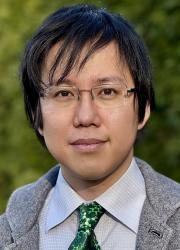 |
Prof. Dr. Kenichi EndoJunior professor at the University of Stuttgarthomepage |
Porous crystalline materials for catalysis Our research group is at the forefront of creating functional materials through the chemistry of metal–organic frameworks (MOFs) and covalent organic frameworks (COFs) for catalytic applications. We specialize in the development of MOCOF, the fusion of MOF and COF chemistry, to realize materials with superior properties, as well as creating well-defined catalytic sites in MOFs/COFs/MOCOFs. Our expertise spans coordination chemistry, organic chemistry, and materials science, supported by an extensive range of analytical techniques. These skills empower us to thoroughly understand and design the synthetic processes, structures, and catalytic behaviors of porous crystalline materials. By leveraging our knowledge and methodologies, we strive to push the boundaries of materials science and chemistry. Research Method and Area: Experimental Chemistry, Material Science |
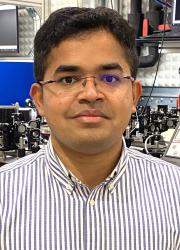 |
Dr. Manish GargGroup Leader at Max Planck Institute for Solid State Researchhomepage |
Quantum Microscopy and Dynamics The focus of our research is to integrate the techniques of attosecond physics, scanning tunneling microscopy and ultrafast Raman spectroscopy to realize a four-dimensional space-time quantum microscope to capture electrons and atoms in action in molecules, two-dimensional materials and superconductors. The four-dimensional microscope is capable of probing matter at fundamental space-time quantum limits. We also pursue experiments on molecules present in the cavity of 'on-chip' nanodevices exploring different regimes of light-matter interaction. Research Method and Area: Experimental Chemistry, Physics |
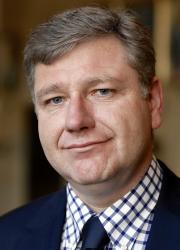 |
Prof. Dr. Frank GießelmannInstitute of Physical Chemistry, University of Stuttgarthomepage |
Liquid Crystals Our main research direction is the structure and dynamics of the liquid-crystalline state of matter. Liquid crystals are quintessential soft matter materials and provide an excellent testing ground for the advancement of essential concepts in condensed matter science, such as self-organization, phase transitions, hydrodynamics and elasticity. Systems exhibiting liquid crystalline order range from small rod- or disc-shaped organic molecules (e.g., the ‘classic’ liquid crystals used in LCD devices), over polymers, dispersions of micelles and nanoparticles (e.g., CNTs and viruses) to certain quantum electronic materials. Our research aims to elucidate the relations between the molecular structures, the symmetry and order parameters of liquid crystalline ordering, and the macroscopic properties of liquid crystals. We are particular interested in the unique chirality effects in liquid-crystalline systems, leading to self-organized chiral nanostructures which e.g. mimic the liquid-crystalline structures found in biological matter. Research Method and Area: Experimental Chemistry |
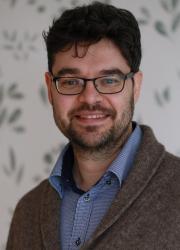 |
PD Dr. Daniel KatsGroup Leader at the Max Planck Institute for Solid State Research (MPI-FKF)homepage |
Coupled Cluster Theory We are extending the coupled cluster theory, one of the most successful theories for ab-initio simulations of molecules, to study strongly correlated, extended and periodic molecular systems. We are developing novel coupled cluster approaches and embedding methodologies, and use automatic coding techniques to implement the new methods. These methods can be applied to various molecular or model systems, with strongly and weakly correlated electrons, to calculate ground and excited state properties and to predict or explain experimental findings. Research Method and Area: Theoretical Chemistry |
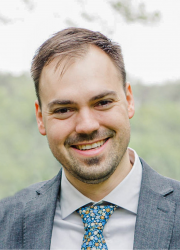 |
Dr. Simon KrauseGroup Leader at the Max Planck Institute for Solid State Research (MPI-FKF)homepage |
Dynamic framework materials and molecular machines Our interdisciplinary research group explores how to teach crystals tricks of living matter by investigating dynamic features of molecular framework materials such as metal-organic and covalent organic frameworks (MOFs and COFs). By specifically tuning the structural topology of the framework, we create soft porous crystals which exhibit pore contraction and/or expansion as a response to the adsorption of gases and fluids or external triggers such as light irradiation. Such materials can act as responsive cargo-release systems, nanoscopic sensors or feature counterintuitive phenomena such as negative gas adsorption. We furthermore construct frameworks which contain molecular machines such as light-driven molecular motors and switches as responsive and intrinsically dynamic building blocks. We aim towards collective operating molecular machines in the solid state which are able to actively transport molecules in the pore space and facilitate dynamic conversion and storage of energy carriers and other small molecules. Our diverse team uses a wide range of synthetic and experimental tools and collaborates in national and international research projects to push the boundaries of dynamic features in crystalline solids. Research Method and Area: Experimental Chemistry, Material Science |
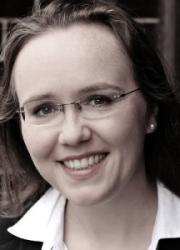 |
Prof. Dr. Anke KruegerChair of Organic Chemistry at University of Stuttgart, Faculty of Chemistry and Materials Sciencehomepage |
Synthesis, characterization and application of carbon nanomaterials and carbon-rich organic molecules Our work is dedicated to the synthesis, characterization and application of different carbon nanomaterials such as nanodiamond, diamond films and carbon onions as well as carbon-rich organic molecules for a broad range of applications. These applications include drug delivery, tissue engineering, quantum sensing and other quantum technologies, catalysis and energy storage in batteries and supercapacitors. Research Method and Area: Experimental Chemistry, Material Science |
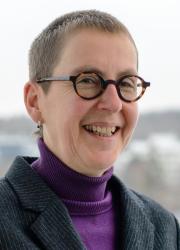 |
Prof. Dr. Sabine LaschatDirector of the Institute of Organic Chemistry, University of Stuttgarthomepage |
Catalysis - Liquid Crystals - Synthesis of Natural Products My research interests deal with the design, synthesis and characterization of novel liquid crystalline materials, hybrid materials of dyes and liquid crystals, as well as biomaterials. We try to understand structure property relationships in such materials towards novel organic electronics, ion conductors and battery materials. Research Method and Area: Experimental Chemistry |
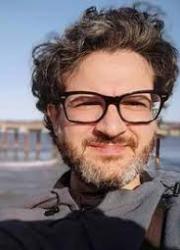 |
PD Dr. Giovanni Li ManniGroup Leader at the Electronic Structure Theory Department, Max Planck Institute for Solid State Research (MPI-FKF)homepage |
Quantum chemistry calculations for magnetic, catalytic and optical properties properties of mono- and poly-nuclear transition metal clusters The research conducted by our group focuses on the development of advanced electronic structure theory for studying the complex magnetic, optical and catalytic properties of mono- and polynuclear transition metal clusters. Our work extends to the investigation of biological and biomimetic materials, as well as cluster models of crystals with increasing size and electronic complexity. Spin is the centerpiece of our research. Utilizing stochastic multiconfigurational methods, perturbation theory, and Multiconfiguration Pair-Density Functional Theory (MC-PDFT), we address open questions regarding their ground, excited, and transition states. For instance, we employ Stochastic-CASSCF, perturbation theory, and MC-PDFT to resolve the low-energy states of FeS cubanes, active in the nitrogen fixation process and the Co3ErO4 cubane, which serves as a biomimetic analog of the CaMn4O5 cluster in photosystem II, active towards the water splitting reaction. Our simulations provide valuable insights into the magnetic interactions across the metal centers, and predictions of the magnetic susceptibility at variable temperature. Additionally, we utilize metaheuristics, such as genetic algorithms and machine learning strategies, to enhance the efficiency of our electronic structure methods and to deepen our understanding of the magnetic properties of these systems. Research Method and Area: Theoretical Chemistry |
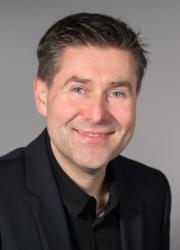 |
Prof. Dr. Dirk ManskeGroup Leader at the Max Planck Institute for Solid State Research (MPI-FKF)homepage |
Theory of Unconventional Superconductors / Non-equilibrium Higgs Spectroscopy of Superconductors The research in my group is mainly focused on non-equilibrium phenomena in Quantum Materials as well as on novel Josephson and Proximity effects using triplet superconductors. One major direction of our actual investigations are Higgs oscillations in superconductors under non-equilibrium conditions. Employing various non-equilibrium techniques we have predicted unique effects that provide novel insights into unconventional superconductors. We collaborate with many experimental groups in Stuttgart as well as in Toyko and Vancouver within the framwork on the Max Planck--UBC--UTokyo Center for Quantum Materials. With the prediction of novel and Josephson and Proximity effects in triplet junctions my group has opened a new field of research in condensed matter physics. Finally, I pioneered a new field 'Higgs spectroscopy' where collective modes of the superconducting order parameter classifies the ground state. A new field in the area of superconductivity. Experiments have confirmed our recent predictions. Research Method and Area: Theoretical Physics |
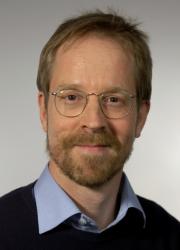 |
Prof. Dr. Walter MetznerDirector at the Max Planck Institute for Solid State Research (MPI-FKF)homepage |
Quantum Many-Body Theory In the Quantum Many-Body Theory department, electronic properties of solids are analyzed and computed with a main emphasis on systems where electronic correlations play a crucial role, such as high temperature superconductor and other transition metal oxides. Besides bulk properties of one-, two- and three-dimensional systems also surface states of topological phases, as well as problems with a mesoscopic length scale such as quantum dots, quantum wires, and quantum Hall systems are being studied. The correlation problem is treated by various modern numerical and field-theoretical techniques. Research Method and Area: Theoretical Physics |
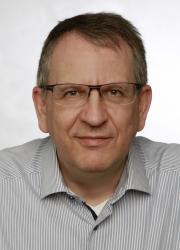 |
Prof. Dr. Rainer NiewaInstitute of Inorganic Chemistry, University of Stuttgarthomepage |
Inorganic Solid State Chemistry and Development of New Materials The work focuses on synthesis and detailed characterization of metal-rich compounds, preferentially containing nitrogen as a constituent. First emphasis is the design and development of preparative techniques as basis for synthesis of novel materials. Special attention is granted to structural characterization, electronic and magnetic properties as well as mechanical and chemical behavior. These data are inevitable for any detailed consideration of chemical bonding and potential applications. • Advanced solid state synthesis of functional materials including various high pressure techniques, solvothermal synthesis and crystal growth, high temperature synthesis • Solid state reaction pathways and crystal growth mechanisms • Magnetic and superconducting materials, ionic conductors Research Method and Area: Experimental Chemistry |
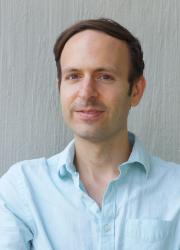 |
Prof. Dr. Mathias ScheurerProfessor at the University of Stuttgart, Institute for Theoretical Physics IIIhomepage |
Theory of strongly correlated quantum matter Our research deals with the theoretical description of the emergent collective phenomena that arise in interacting quantum many-body systems, resulting from competing interactions, disorder, and topology. More specifically, we are interested in unconventional and topological superconductivity, complex phase diagrams, the impact of impurities in crystals, spin-orbit coupling, magnetism, spin liquids and topological order, moiré superlattice systems, non-Hermitian many-body physics, and more. To address these problems, we use a combination of analytical and numerical techniques of quantum field theory and statistical mechanics. Furthermore, we explore the potential of machine-learning to address problems of many-body physics. Research Method and Area: Theoretical Material Science, Physics |
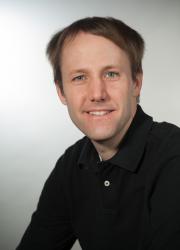 |
Dr. Andreas SchnyderGroup Leader at the Max Planck Institute for Solid State Research (MPI-FKF)homepage |
Theory of Topological Quantum Matter Our research group studies electronic and magnetic structures of quantum materials. A special focus is on topological materials, which exhibit unusual properties, such as exotic surface states and anomalous transport phenomena, that are unaffected by continuous deformations, e.g., stretching, compressing, or twisting. Our aim is to develop a theoretical framework to describe these topological properties, and to find new ways how to use them in the laboratory and for device applications. We seek to classify topological materials in terms of symmetries and to discover new remarkable examples. Current research priorities focus on the topological properties of nodal-line semimetals, topological metals with nodal planes, altermagnets, and unconventional superconductors, which we study using both analytical and numerical techniques. Research Method and Area: Theoretical Material Science, Physics |
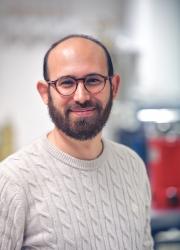 |
Dr. Lorenzo TesiEmmy Noether Junior Group Leaderhomepage |
Molecular Spin Qubits in Two-Dimensions at THz Frequency Among the possible systems that exhibit quantum properties, molecular spin qubits (MSQs) are one of the most versatile platforms. At the heart of MSQs is the electronic spin, which can originate from unpaired electrons of organic centers, transition metals or lanthanides. The organic ligand surrounding the qubit can also be engineered to tune the electronic and spin properties. My group focuses on the deposition of MSQs on surfaces and investigation using spectroscopic techniques, in particular magnetic resonance. We also aim to extend the operating frequency range from X-band (9 GHz) to THz (> 100 GHz) using plasmonic metasurface magnetic resonators designed and fabricated by us. The group is therefore very multidisciplinary, at the interface of chemistry and physics, and young, having been established in January 2024 Research Method and Area: Experimental Chemistry, Material Science, Physics |
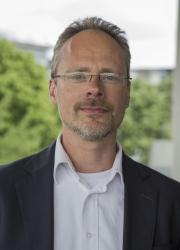 |
Prof. Dr. Joris van SlagerenUniversity Professor, Institute of Physical Chemistry, University of Stuttgarthomepage |
Advanced Spectroscopy for Quantum Technologies and Catalysis · Spectroscopy, especially electron paramagnetic resonance spectroscopy at conventional and high frequencies. We apply and develop a wide range of experimental methods.
· Molecular Quantum Science and Technologies, understanding, engineering and application of molecules in novel quantum architectures.
· Molecular Nanomagnets, understanding of electronic structure and magnetic properties of molecular systems with bistable magnetization of molecular origin.
· Catalysis, application of (THz and conventional) EPR methods in catalysis research, pushing toward in situ and operando investigations.
Research Method and Area: Experimental Chemistry, Material Science, Physics |